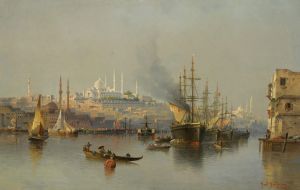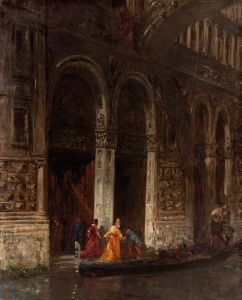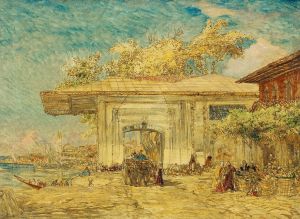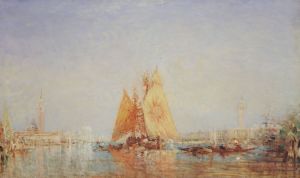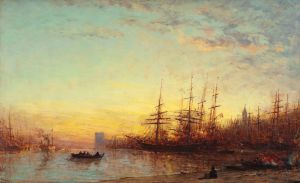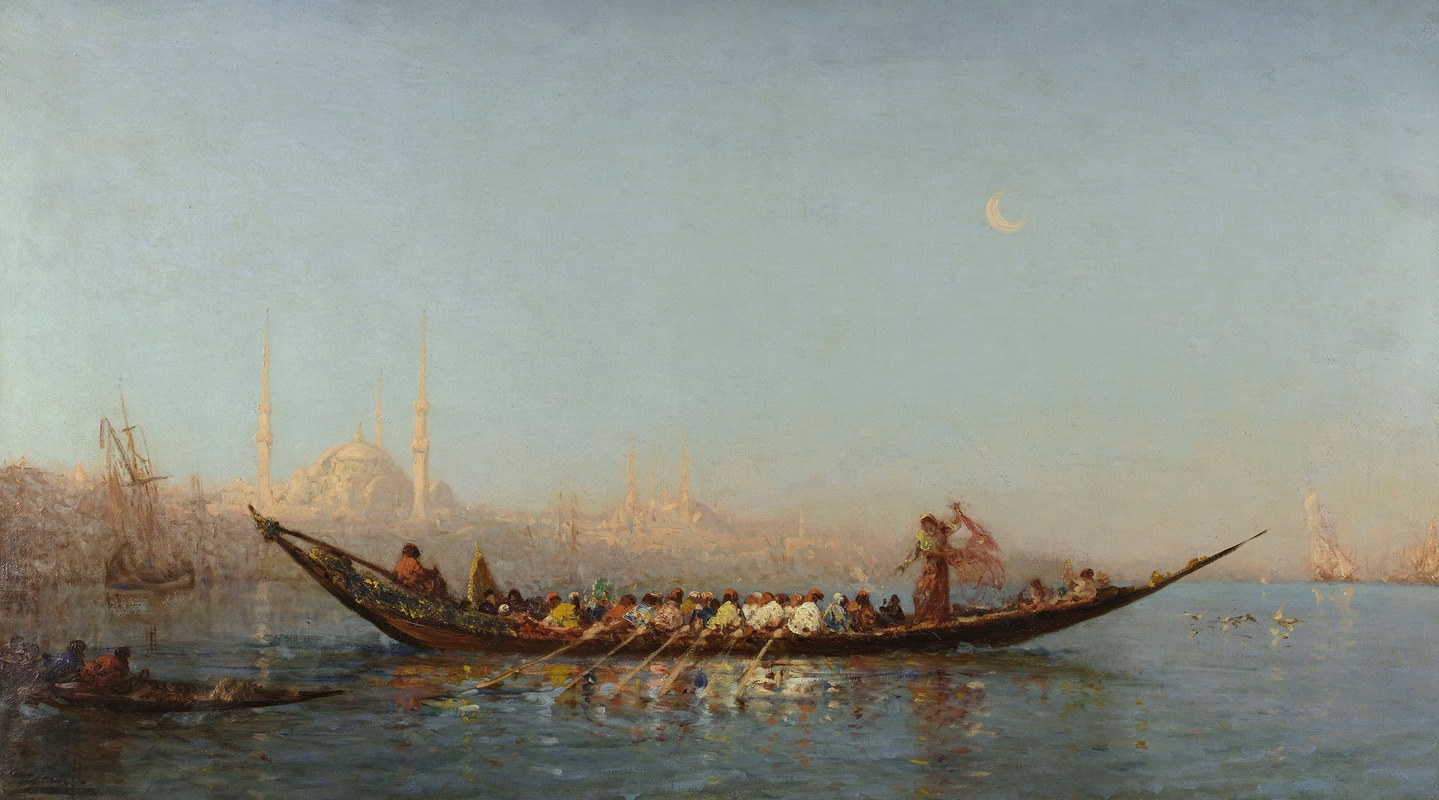
Constantinople, Le Caïque De La Sultane
A hand-painted replica of Félix Ziem’s masterpiece Constantinople, Le Caïque De La Sultane, meticulously crafted by professional artists to capture the true essence of the original. Each piece is created with museum-quality canvas and rare mineral pigments, carefully painted by experienced artists with delicate brushstrokes and rich, layered colors to perfectly recreate the texture of the original artwork. Unlike machine-printed reproductions, this hand-painted version brings the painting to life, infused with the artist’s emotions and skill in every stroke. Whether for personal collection or home decoration, it instantly elevates the artistic atmosphere of any space.
Félix Ziem's painting Constantinople, Le Caïque De La Sultane is a notable work by the French artist, who is renowned for his vibrant depictions of landscapes and cityscapes, particularly those inspired by Venice and the Ottoman Empire. Ziem (1821–1911) was a prominent figure of the 19th-century French art scene, associated with the Barbizon School and later recognized as a precursor to Impressionism due to his use of light and color.
This painting captures a scene in Constantinople (modern-day Istanbul), the capital of the Ottoman Empire, during the 19th century. The title, which translates to "Constantinople, The Sultan's Caique," refers to a traditional Ottoman boat, or caique, used for transportation along the Bosphorus Strait. Caiques were often ornately decorated and served as a symbol of wealth and status, particularly when associated with the Sultan or members of the imperial court. In this work, Ziem portrays the caique gliding across the water, surrounded by the architectural and natural beauty of Constantinople.
Ziem was deeply inspired by his travels, and his visits to the Ottoman Empire in the mid-19th century left a lasting impression on his art. His fascination with the exoticism and grandeur of the East is evident in this painting, which combines meticulous attention to detail with a romanticized vision of the city. The composition highlights the interplay of light on water, a hallmark of Ziem's style, and emphasizes the cultural and historical richness of the setting.
The painting reflects the 19th-century European fascination with Orientalism, a movement in art and literature that sought to depict the cultures of the Middle East, North Africa, and Asia. While Orientalist works often romanticized or idealized their subjects, Ziem's approach was characterized by a genuine admiration for the places he visited, as seen in his careful rendering of architectural elements and atmospheric effects.
Constantinople, Le Caïque De La Sultane is an example of Ziem's ability to blend realism with a sense of poetic imagination. The painting is celebrated for its luminous palette, dynamic composition, and evocative portrayal of a bygone era. Today, it stands as a testament to Ziem's skill as a painter and his enduring legacy as a chronicler of the 19th-century world.
Further details about the specific provenance or current location of this painting are not widely documented. However, Ziem's works are held in numerous public and private collections, including the Musée Ziem in Martigues, France, which is dedicated to his life and art.





